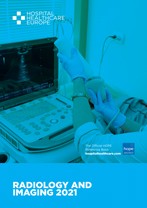Bio ink flow dynamics can potentially damage cells during the process of bioprinting. Using a microscopy technique, researchers have directly observed ink flow to help identify conditions that could lead to cell damage.
Bioprinting enables the automated organising of living materials such as cells, layer by layer to create 3-dimensional (3D) structures such as organs and has a huge potential to revolutionise regenerative medicine. While there are several different approaches, one particular technique, extrusion-based 3D bioprinting has been widely adopted by the tissue engineering community, due to its great versatility and capacity to create numerous different tissues.
In extrusion-based bioprinting, the substance is delivered via a hydrogel and through a thin capillary tube with diameters between 50 mcm and 1 mm. Consequently, during the extrusion process, the cells are subjected to mechanical forces, especially shear stress and which can result in considerable damage or even death of cells. Moreover, these forces are likely to be worsen, specifically if the capillary diameter is very narrow and ultimately affect the viability and functionality of the resultant tissue. In an attempt to reduce these forces, several hydrogels exhibit what has been described as a ‘shear thinning’ effect, although this is not always successful. One possible approach to understanding the impact of the mechanical forces exerted on cells would be continuous imaging of the extrusion process to help again a better insight of the flow dynamics and cell movements. Furthermore, the development of continuous imaging could serve as a means for process quality control.
In an effort to better understand the flow dynamics through the capillary tube, an international team led by the Department of Bioengineering, Imperial College, London, explored the use of light sheer fluorescence microscopy (LSFM) to quantify the real-time flow of cell-laden hydrogels through a capillary. The aim of their study was to provide quantitative information on the cell-hydrogel interplay in a capillary tube which served to mimic the portion of the extrusion bioprinting process in which cells were likely to be damaged.
Findings
Using the LSFM the researchers were able to quantify the flow of cell-laden hydrogels through the capillary in real-time and the velocity of cell travel. This revealed how some cells appeared to roll on the surface of the capillary while others, not in contact with the capillary wall seemed to spin and those in the central portion spun faster. The LSFM essentially provided the team with information on the capillary viscosity and enabled a better understanding differences in cell viability. In addition, it was possible to image the hydrogel flow through the capillary, which indicated that the hydrogel separated into a solid and fluid phase with cells embedded in both phases. This created irregularly shaped solid phases suspended within the fluid phase and which, the authors felt, accounted for the variations in the calculated velocity measurements.
Cell survival was found to be dependent upon extrusion flow rates and cell viability was 2–2.5-times lower at higher flow rates.
In discussing their results, the authors indicated how the study had demonstrated the power of LSFM as a powerful imaging modality for the examination of flow dynamics through a capillary tube. Although this is the first study to explore the real-time imaging of capillary flow, the authors speculated that in the future, LSFM could be used to help with the design of the shape of capillaries to modulate cell viability during extrusion bioprinting.
Citation
Poologasundarampillai G et al. Real-time imaging and analysis of cell-hydrogel interplay within an extrusion-bioprinting capillary. Bioprinting 2021. https://doi.org/10.1016/j.bprint.2021.e00144




